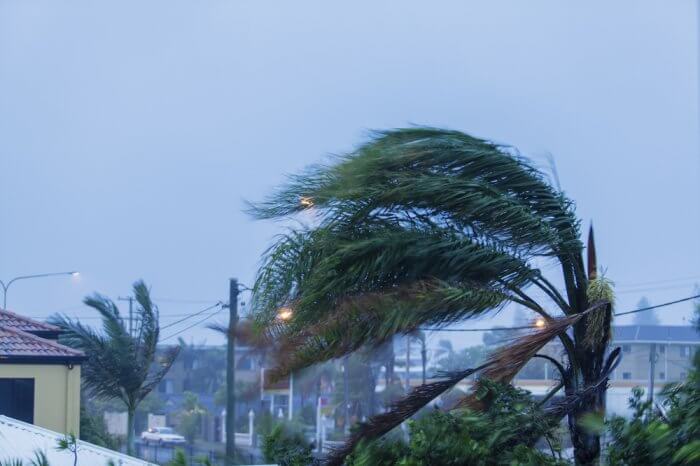
Compare the Market is encouraging Australians to compare their electricity plans and move to cheaper offers if they can, after the Australian Energy Regulator (AER) and Victorian Essential Services Commission (ESC) today confirmed that electricity pricing changes for the Default Market Offer and Victorian Default Offer will be implemented from 1 July.
The AER’s final determination says that the average annual household electricity bill for residential customers without a controlled load on the Default Market Offer (DMO) will increase by a year-on-year average of:
- $155 (8.6%) to $1,965 in NSW Ausgrid distribution network (Sydney/Newcastle/Hunter Valley region)
- $188 (8.5%) to $2,411 in NSW Endeavour distribution network (Wollongong/Lithgow down to Ulladulla)
- $228 (9.1%) to $2,741 in NSW Essential distribution network (rest of NSW)
- $77 (3.7%) to $2,143 in QLD’s Energex distribution network (SE QLD)
- $71 (3.2%) to $2,301 in South Australia’s SA Power Networks distribution network (South Australia)
The ESC in Victoria said prices will be dropping by $26 in one distribution zone but increasing by between $4 and $90 in others, compared to 2024-25.
However, Compare the Market’s Head of Energy, Meredith O’Brien, said we’ll likely see price changes across all plans on the market as a result of today’s announcement.
“Whether or not you’re on a standing offer, we know that households across Victoria, South Australia, South East Queensland and New South Wales will likely see changes to their electricity prices from 1 July as a result of today’s determination,” Ms O’Brien said.
“The Independent Competition and Regulatory Commission will announce Electricity retail prices for the ACT in the coming days.
“The purpose of the DMO and VDO is to be a fair price for Australians on electricity standing offers and act as a reference price benchmark to compare alternative retail market electricity offers against. When the price of electricity standing offers change, so too do other plans on the market.”
The DMO is a cap i.e. the standing offer is the most expensive electricity plan that a retailer can sell in these jurisdictions, so all retail market offers must be equal to or less than this. The VDO is considered an average of available market offers. Market offers can be higher than the VDO in Victoria.
“Now’s the time to take back the power and ensure you’re not paying a cent more than you need to for your electricity,” Ms O’Brien said. “While the government has confirmed that all households will receive a $150 energy bill rebate from 1 July, you may be able to find even bigger savings by switching to a cheaper electricity plan. It doesn’t make sense not to stretch that rebate as far as you can or to pay more than you need to in light of the regulators’ announcement today.”
An April survey from Compare the Market revealed that just 20.1% of Australians surveyed had switched electricity providers in the last 12 months.* Meanwhile, 807,882 households in DMO and VDO regions are currently on the standing offer.
“These Australians are simply paying too much for their electricity,” Ms O’Brien said. “The easiest way to know if you’re throwing your money away is to check the ‘better offer’ message on your electricity bill. Your retailer will tell you if they can offer a cheaper plan, but also check other deals on the market. We’ve started to see some really competitive offers in the lead up to 1 July, so use it to your advantage.”
Ms O’Brien said a number of factors influenced the latest price hike in some regions, including:
Distribution costs – the cost of transporting and distributing electricity to homes is on the rise. Remember that distributors are responsible for maintaining gas pipes, electrical poles and wires, as well as vehicle, fuel and employee costs.
Network costs – Network costs are a significant factor for the forecast increases. They are largely attributed to higher inflation and interest rates in New South Wales, Queensland and South Australia.
Buying in bulk – If retailers have bought electricity in bulk at a fixed rate and prices drop, it could mean Australian households need to wait some time to see the benefits of the price reduction.
Retailer costs – Retail costs have been a significant driver in the increased year-on-year costs, and are the largest increases across the estimate calculations, while retail margin remains relatively flat.
Metering costs – You’ve likely heard of more smart meters being rolled out across the country by 2030, which typically allow electricity to be read remotely and to track data differently from the traditional meters. There’s a cost involved in this new technology, which again, could be passed on to consumers.
When comparing electricity plans, Ms O’Brien said there were a few things to keep an eye out for.
- Pay careful attention to individual plans and not just retailers: The same retailer can offer different prices, discounts and benefits for different plans. One size does not fit all.
- Look at the whole picture, not just usage fees: Don’t get sucked in by a low usage fee. Also ensure that the daily supply charge and solar feed-in tariff measure up – particularly if you have separate meters, such as a solar metering supply charge, or controlled load supply charge.
- Is a deal really a deal? If you’re switching plans for a perk or reward, ensure that you’re not paying a higher price for electricity to reap that reward. This may be true for plans offering access to streaming services, frequent flyer points and other incentives.
- Fixed and variable electricity plans exist: Even if you compare and switch before 1 July, your prices could change if you opt for a variable plan. Fixed rate plans can give more certainty about what you’ll pay for the term specified in your plan.
How are prices changing from 1 July?
| Distribution Zone | Average annual price Until 30 June 2025 | Average annual price from 1 July 2025 | Average annual Increase/Decrease | Average annual percentage Difference |
| NSW Ausgrid distribution network (Sydney/Newcastle/Hunter Valley region) | $1,810 3,900 kWh Residential annual usage single rate tariff without a Controlled Load | $1,965 3,900 kWh Residential annual usage single rate tariff without a Controlled Load | $155 | 8.6% |
| NSW Endeavour distribution network (Wollongong/Lithgow down to Ulladulla) | $2,223 4,900 kWh Residential annual usage single rate tariff without a Controlled Load | $2,411 4,900 kWh Residential annual usage single rate tariff without a Controlled Load | $188 | 8.5% |
| NSW Essential distribution network (rest of NSW) | $2,513 4,600 kWh Residential annual usage single rate tariff without a Controlled Load | $2,741 4,600 kWh Residential annual usage single rate tariff without a Controlled Load | $228 | 9.1% |
| South Australia’s SA Power Networks distribution network (South Australia) | $2,230 4,000 kWh Residential annual usage single rate tariff without a Controlled Load | $2,301 4,000 kWh Residential annual usage single rate tariff without a Controlled Load | $71 | 3.2% |
| QLD’s Energex distribution network (SE QLD) | $2,066 4,600 kWh Residential annual usage single rate tariff without a Controlled Load | $2,143 4,600 kWh Residential annual usage single rate tariff without a Controlled Load | $77 | 3.7% |
| VIC Powercor | $1,699 4,000 kWh residential annual usage single rate tariff without Controlled Load | $1,704 4,000 kWh residential annual usage single rate | $4 | 0.2% |
| VIC Ausnet | $1,902 4,000 kWh residential annual usage single rate tariff without Controlled Load | $1,908 4,000 kWh residential annual usage single rate tariff without Controlled Load | $6 | 0.3% |
| VIC CitiPower | $1456 4,000 kWh residential annual usage single rate tariff without Controlled Load | $1,546 4,000 kWh residential annual usage single rate tariff without Controlled Load | $90 | 6.2% |
| VIC Jemena | $1,644 4,000 kWh residential annual usage single rate tariff without Controlled Load | $1,638 4,000 kWh residential annual usage single rate tariff without Controlled Load | -$26 | -1.6% |
| VIC United Energy | $1,554 4,000 kWh residential annual usage single rate tariff without Controlled Load | $1,579 4,000 kWh residential annual usage single rate tariff without Controlled Load | $25 | 1.6% |
Source: AER and ESC . Based on residential customers without a controlled load on the Default Market Offer and Victorian Default Offer (DMO and VDO prices may vary based on actual usage).
*Survey of 1,009 Australian adults, conducted April 2025.
For more information, please contact:
Phillip Portman | 0437 384 471 | [email protected]
Compare the Market is a comparison service that takes the hard work out of shopping around. We make it Simples for Australians to quickly and easily compare and buy insurance, energy, and home loans products from a range of providers. Our easy-to-use comparison tool helps you look for a range of products that may suit your needs and benefit your back pocket.








